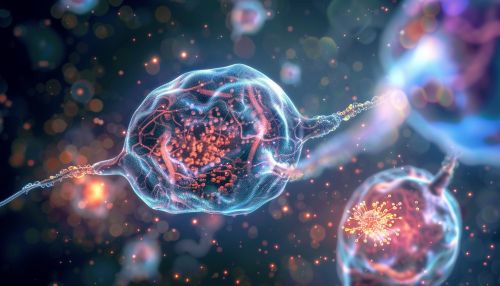Neuroligins
Introduction
Neuroligins are a type of protein found in the body that play a crucial role in the formation and proper functioning of synapses in the neurons. They are part of the larger family of cell adhesion molecules (CAMs) that are involved in the formation and maintenance of synaptic connections between neurons.


Structure and Function
Neuroligins are composed of a large extracellular domain, a single transmembrane domain, and a short cytoplasmic tail. The extracellular domain of neuroligins interacts with neurexins, another type of CAM, to form a trans-synaptic complex. This interaction is critical for the formation and maintenance of synapses.
Neuroligins are involved in the process of synaptogenesis, the formation of synapses between neurons. They also play a role in synaptic plasticity, the ability of synapses to strengthen or weaken over time in response to changes in their activity. This is a critical process for learning and memory.
Types of Neuroligins
There are four known types of neuroligins in humans: NLGN1, NLGN2, NLGN3, and NLGN4. Each of these types has a slightly different structure and function, and they are expressed in different areas of the brain.
NLGN1 is primarily found at excitatory synapses, where it helps to regulate the balance of excitation and inhibition in the brain. NLGN2 is primarily found at inhibitory synapses, where it helps to regulate the balance of excitation and inhibition in the brain. NLGN3 and NLGN4 are less well understood, but they are thought to play a role in the development and function of the brain.
Neuroligins and Disease
Mutations in the genes that encode neuroligins have been linked to a number of neurological and psychiatric disorders, including autism, schizophrenia, and mental retardation. These mutations can lead to abnormalities in the structure and function of synapses, which can in turn lead to abnormalities in brain function.
Research into the role of neuroligins in disease is ongoing, and it is hoped that this research will lead to new treatments for these disorders.
